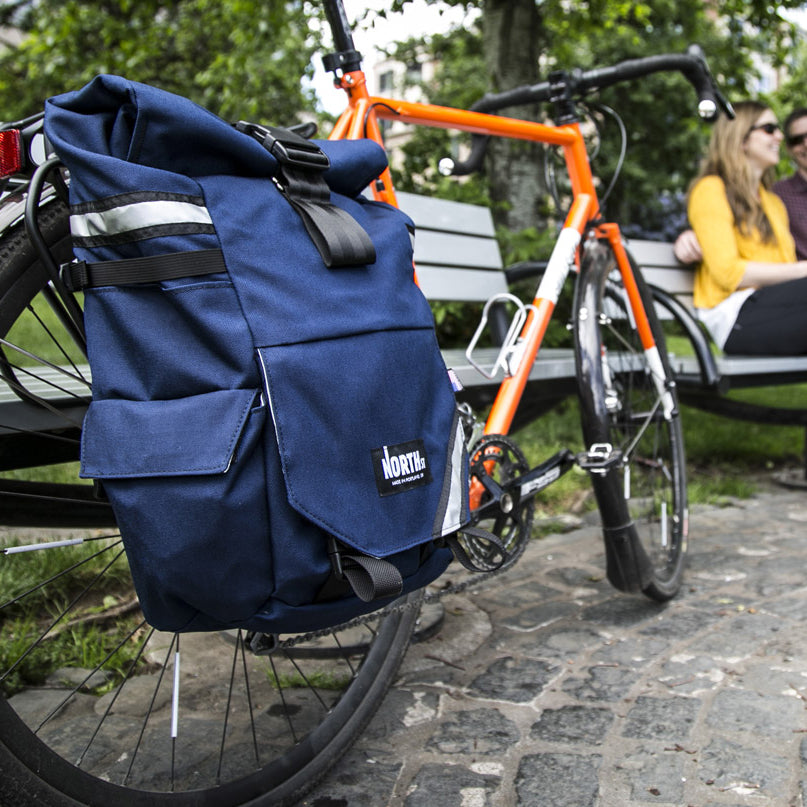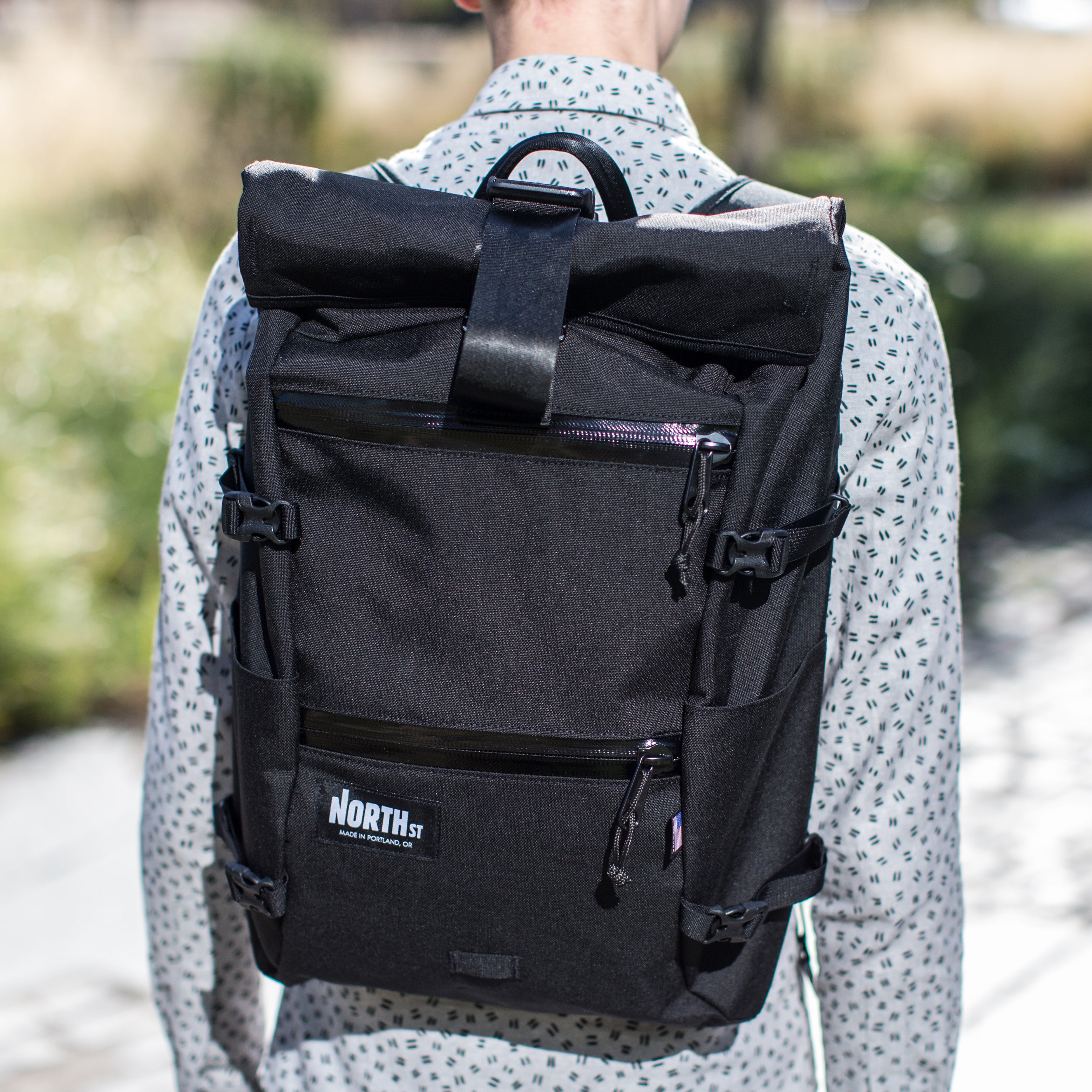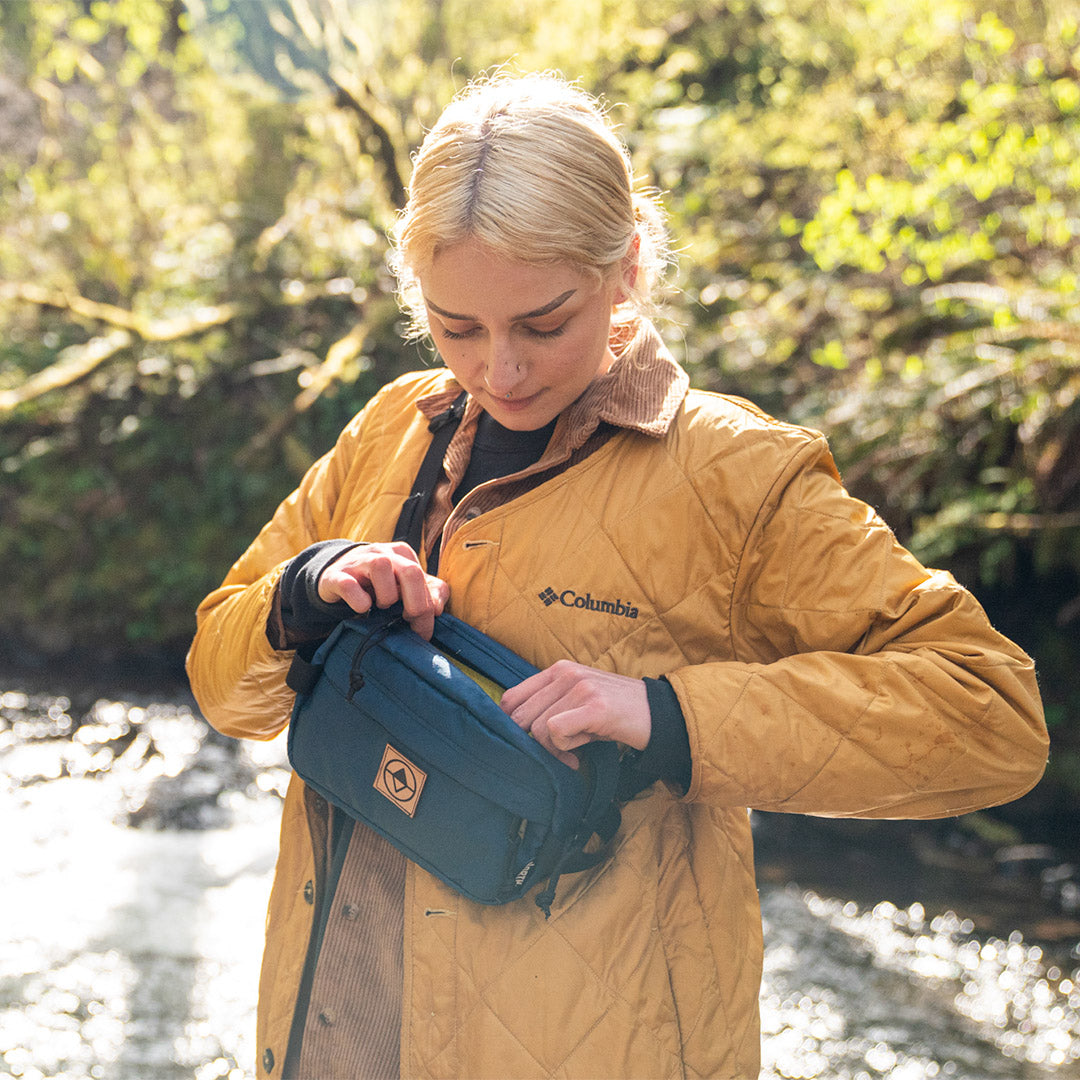How to stay warm and dry on your winter commute
December 27th, 2023
Motivating yourself to commit to bike commuting year-round can be a daunting task. We get it-- it’s cold and wet, and it will probably be dark outside before you know it. You may even be facing inches of snow on the ground. Despair not, we are here to help! If you are hoping to increase your bike commuting this winter, we are here to tell you that not only is it possible, but it can also be comfortable and even a little fun.

Tip #1 - Layer up!
Let’s tackle what might be the biggest hurdle for most people - how to stay dry and warm when you are out there on the road. The best piece of advice we can give here is to layer up! Pick out a few warm base layer pieces that will help keep you warm. When you first set off you may be a bit colder, especially if you are biking in the wind and rain. As you warm up you may find it helpful to shed a layer or two so you can stay comfortable and not overheat for the second half of your ride.
When choosing pieces to ride with, we highly recommend wool or synthetic materials which will keep you warm even if they get wet. Stay away from cotton clothing, especially for those base layers as it will actually steal your precious body heat when it gets wet. Nothing will make your ride miserable faster than being soaking wet on a cold night in a cotton tee and jeans.
Don’t forget your feet! Wool socks go a long way in making a wet ride more comfortable. Splashing through puddles will often soak your feet faster than the rest of you, so it may be worth it to get a pair of waterproof shoes as well.
You may be concerned that between the shoes and the extra layers, this bike commuting outfit isn’t what you want to wear all day at work. Maybe you have more formal work attire, or just want to rock a different style during the day. One useful trick here is to carry work clothes in your bag. Leave yourself a few minutes before you need to clock in to slip into your dry work outfit and shoes and hang your rainy clothes up to dry so they are ready for your ride home.
Panniers, like our Route 24L, have plenty of cargo space for extra clothes in addition to your laptop, lunch, or any other items you need for your day.
Tip #2 - Come up with a strategy for staying dry
In certain weather (especially in the Pacific Northwest), the biggest challenge with staying dry actually can come from below. Spray from the wheels when riding on wet or snowy roads can actually be more intense than the precipitation falling from the sky. Now we get to what is a hotly debated topic among seasoned winter commuters: rain pants vs fenders. We make bags, so we don’t really have a dog in this fight, but we do think it’s important to have a strategy for staying dry when riding. Both options have their pros and cons and we’ll leave it to you to decide which is right for your setup.
Fenders can be an excellent way to keep water and road sludge off of your back, or from flying up into your face (or the face of the rider behind you). They are available for both front and rear wheels, and they often come in matching sets. Fenders come in many styles and they can also add an extra bit of flair to your bike. A good fender will last a few seasons, if not more.
We like fenders because they will prevent your clothing, shoes and bags from getting as wet. If the roads are wet but the rain has stopped, you might get away without donning your rain gear.
One downside is that it is another piece of equipment to attach to your bike and maintain. A fender can bring an extra rattle if it comes loose, or worse it can rub on your tire, sapping your momentum. They can be tricky to install yourself, but hey, isn’t that what your local bike shop is for?
You may decide to embrace the inevitable road spray - let it come! Wheel spray is no match for a quality pair of rain pants. This is the same basic concept as a rain jacket, but for your legs-- a waterproof shell layer to go on over your warm layers. We like rain pants because they keep you dry from all directions both on and off the bike. You may need to stop to adjust something on your bike or help a friend with a flat tire. A solid set of rain gear will keep you dry no matter what. The downside that we find with rain pants is that they tend not to breathe as much. If you run hot they can actually trap heat and sweat, and they are less easy to shed as a layer when en-route.

Tip #3 - Get Visible
One often overlooked factor during winter months is how much daylight there is-- rather, how much there isn’t! Depending on your locale (like ours here in Portland), you may find that it’s pitch dark outside at 5pm when you’re gearing up for a ride to the next part of your day. Riding into traffic is daunting enough when the sun is out. Increasing your visibility on the road is an important safety precaution so that you are sure to be seen by drivers.
The best way to go about this is to invest in a good set of bike lights. There is a wide assortment of products available, and some are much better than others. That cheap set in the check-out aisle at the grocery store will probably not do much for you. Brands like our friends at Portland Design Works have an excellent selection, including lights that are USB rechargeable.
You can never have too many lights on your bike, so once you have the basic head and tail lights installed, get creative! We’ve seen battery powered LED string lights, light up spokes and all kinds of other setups. Adding lights or reflectors to the moving parts on your bike can be a great way to increase your noticeability on those dark roads. Don’t forget the trusty Reflective Ankle Strap (made by us at our shop in Portland) which doubles as a pant-leg wrangler.
Tip #4 - Plan your route
An important aspect of any commute is testing out different routes, especially in the winter months. Inclement weather, less daylight and more holiday stress on the road are all factors that can impact conditions. This is equally true if you live in a place like Portland, where dedicated bike lanes, traffic calming elements and other bike features are a common site, or if your community has little to no bike infrastructure.
Google Maps has a bicycle mode which may give you a starting point to map from A to B. We recommend testing a few different routes to see what works best for you. Pick a weekend morning when traffic is calmer to test the route during daylight. Consider how you might cross major roads. Where are the traffic lights situated? Is there a longer route to consider because there is a bike lane for part of the way? We often find that the best route isn’t always the shortest one.
Knowing your route well can help make sure that you are staying safe in traffic conditions. As you bike to and from work routinely you can start to predict how long it will take. Plus you can challenge yourself a bit to see if you can improve on your time. Cycling is a great calorie burner, great for mental health, and can be a very fun experience, even in the winter.
Tip #5 - Take it easy!
Bike commuting is not a competition. There are many different reasons to choose a bike to get around. There is no wrong way to do it. Anyone who gets on a bike for transportation should feel empowered and delighted for making that choice, whether they are doing it for health reasons, to lead a more sustainable life, or because it’s the best option available to them that they can afford. We hope that your community is a welcoming and safe place to get on your bike.

Biking in the snow
No winter riding post would be complete without talking about snow. Yes, people do bike in the snow and yes, you can be one of them. We recommend caution! Snowy conditions, especially deep snow or slush on the roads can impact a ride quite a bit more than rain. Snow on the road can greatly decrease the amount of traction your tires have on the road, so we recommend using wider and more textured (knobby) tires if you can.
If your city is used to handling snow with plowing, sanding or salting the roads, the road conditions might not be too bad, but consider all of the things that might be coming your way. There may be a snow bank in your bike lane. There may be drivers out there that aren’t used to snowy driving which could increase the risk factors. Be prepared and use caution as you travel out there in the snow.
Recommended Gear List
Other Brands we like:
One more thing...
One last tip from your pals at North St. This is possibly the most essential thing you can bring with you on your ride: a good attitude. What do we mean by this? Riding a bike should be a joyous experience, but the world can throw all kinds of challenges your way. We can prepare ourselves by building up our bikes to withstand the elements and buying gear that will help keep us comfy on the road, but you never know when a flat tire, unexpected downpour, impatient driver or any number of other things will stop you in your tracks. Staying open and flexible in your thinking is just as important as any piece of gear you might have. It’s okay to wait for traffic to clear, pick a different route, or even pull out your phone to summon a rideshare or find a bus route to get home.
Ride safe out there! Winter bike commuting gets easier with experience, and we just know that you will be conquering your goals in no time!


